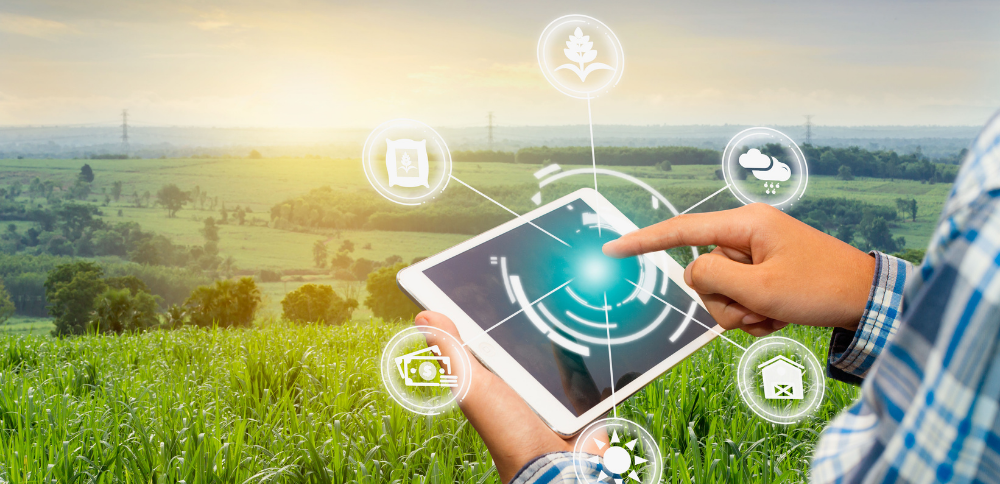Introduction
Agriculture, once primarily driven by tradition and intuition, has undergone a remarkable transformation in recent years. The digital revolution has reached the fields, and farmers are now harnessing the power of data to make informed decisions that were once based solely on experience. This paradigm shift towards data-driven decision-making has given rise to what we now call “Digital Agriculture” or “Precision Farming.”
In this blog post, we’ll delve into the pivotal role of data in modern agriculture, how automation is seamlessly integrated into farming operations, and the myriad benefits this synergy offers to both farmers and the environment.
The Data-Driven Revolution
Traditionally, farming relied heavily on a farmer’s intuition, experience, and weather forecasts. While these factors are still vital, they are no longer the sole determinants of success. Today, farmers are armed with an arsenal of sensors, drones, satellite imagery, and IoT devices that continuously collect data about their crops and livestock.
Crop Monitoring: Data sensors placed in fields provide real-time information about soil moisture, temperature, and nutrient levels. This data allows farmers to precisely control irrigation and fertilization, reducing waste and increasing crop yield.
Livestock Management: In the realm of animal agriculture, sensors can monitor the health and behavior of livestock. For example, wearable devices can track the movement and vital signs of cattle, enabling early detection of illnesses.
Weather Forecasting: Advanced weather prediction models use historical and real-time data to provide highly accurate forecasts. Farmers can anticipate extreme weather events and adjust their plans accordingly.
Crop Scouting: Drones equipped with cameras and multispectral sensors fly over fields, capturing high-resolution images. These images can reveal stress in crops, pest infestations, or nutrient deficiencies, helping farmers make precise interventions.
By analyzing this data, farmers can make data-driven decisions about when to plant, harvest, irrigate, and fertilize. This level of precision not only optimizes resource usage but also reduces environmental impact by minimizing the overuse of water, fertilizers, and pesticides.
The Role of Automation
Data alone is powerful, but its true potential is unlocked when combined with automation. Automation in agriculture encompasses a wide range of technologies and processes that streamline farm operations.
Autonomous Tractors and Machinery: These machines can operate without direct human control, using GPS and sensor data to navigate fields, plant seeds, and harvest crops. They work tirelessly, day and night, improving efficiency and reducing labor costs.
Drip Irrigation Systems: Automated irrigation systems precisely deliver water to crops based on real-time moisture data. This ensures that crops receive just the right amount of water, reducing waste and promoting healthy growth.
Crop Protection: Drones and automated robots can be equipped with spraying systems that apply pesticides or herbicides only where needed, minimizing the environmental impact and reducing chemical usage.
Livestock Care: Automated feeding systems, along with AI-powered cameras, can monitor and feed animals, ensuring their well-being and reducing the labor involved in animal husbandry.
The Benefits of Data-Driven Automation
The integration of data-driven decision-making and automation offers a multitude of benefits for farmers and the agricultural industry as a whole.
Increased Yield: Precision farming techniques allow farmers to optimize crop conditions, resulting in higher yields. Automated machinery ensures timely planting and harvesting, reducing the risk of crop loss due to weather or pests.
Resource Efficiency: Automation reduces the need for manual labor, saving both time and money. Precise resource management based on data minimizes wastage of water, fertilizers, and energy.
Sustainability: By minimizing resource waste and reducing chemical usage, digital agriculture contributes to sustainable farming practices. This not only benefits the environment but also meets the growing demand for eco-friendly farming methods.
Cost Reduction: Automation can significantly lower labor costs, especially for tasks that are repetitive and time-consuming. This can make farming more profitable and sustainable for smaller operations.
Data-Driven Insights: Over time, the data collected from farming operations can provide valuable insights into long-term trends and patterns. This information can guide strategic decision-making, crop selection, and investment in new technologies.
Challenges and Considerations
While the marriage of data-driven decision-making and automation holds great promise for the future of agriculture, it’s not without its challenges and considerations.
Data Security: Protecting sensitive farm data from cyber threats is crucial. Farmers must invest in robust cybersecurity measures to safeguard their information.
Cost of Technology: Acquiring and implementing advanced technology can be expensive, particularly for small-scale farmers. Government incentives and subsidies may be necessary to promote wider adoption.
Skill Gap: Farmers need to acquire new skills to effectively manage and interpret data. Education and training programs can help bridge this knowledge gap.
Environmental Impact: While precision farming reduces the overall environmental impact, it’s essential to consider the environmental cost of producing and disposing of high-tech equipment.
Conclusion
The adoption of data-driven decision-making and automation in agriculture represents a monumental shift in the way we produce food. It’s a shift that is not only essential for feeding a growing global population but also for protecting our planet’s resources and ecosystems.
As technology continues to advance, we can expect even more innovations in digital agriculture. From AI-powered drones that can identify individual plant diseases to fully autonomous robotic farms, the possibilities are endless. The future of farming is data-driven, sustainable, and efficient, thanks to the ongoing marriage of data and automation in agriculture.




